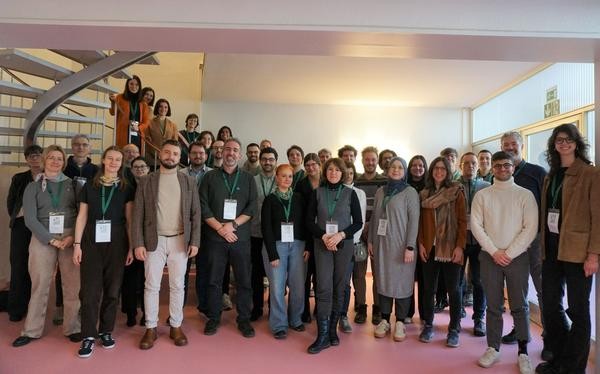From Berlin to the streets: Commit2Green's first steps towards greener and more resilient cities

On 4-5 March, the Commit2Green (C2G) consortium gathered in Berlin to mark the official start of an ambitious journey: transforming how European cities integrate nature into their urban environments.
The project brings together eight cities, research institutions, organisations and innovation leaders from across Europe, all committed to a common objective: to design and implement nature-based solutions (NbS) that are not just project-based but part of a long-term, cross-scalar urban regeneration strategy. The kick-off meeting was the first milestone in this 54-month initiative funded by the European Commission's Horizon Europe programme.
Cities at the centre
This meeting provided an opportunity for each of the participating cities to share their contexts, challenges and ambitions, showcasing the diversity of urban realities across Europe.
- Barcelona aims to create a new environmental park that strengthens the metropolitan network of green spaces, enhancing biodiversity, reducing flood risks and promoting social cohesion.
- Milan is focused on improving ecological connectivity while addressing heat stress, air pollution and social concerns. Plans include the redevelopment of Quarto Oggiaro and restoring Simoni-Lopez Park by using innovative land reclamation techniques like phytoremediation.
- Mannheim is building on existing networks and partnerships to advance its urban nature plans, particularly in the city centre. It aims to enhance green spaces through participatory processes, improving the quality of life while fostering strong community engagement.
- Warsaw is targeting two neighbourhoods (Praga-Południe and Wola) to improve community satisfaction by depaving courtyards, increasing green spaces and mitigating urban heat, all while balancing competing demands such as parking.
- The Hague seeks to integrate nature into ongoing urban development, focusing on creating a waterfront park and expanding green spaces in new housing areas. It aims to enhance biodiversity, climate resilience and the liveability of rapidly developing neighbourhoods.
- Thessaloniki is focusing on enhancing green infrastructure in densely built areas, with a particular emphasis on schoolyards and public spaces. It aims to improve accessibility, foster community participation and strengthen the city's climate resilience.
- Sarajevo is converting underused and neglected spaces into vibrant green areas to address challenges such as flooding, air pollution and climate resilience. It builds on strong existing networks and aims to create inclusive, multifunctional public spaces for the local community.
- Vejle is transforming a flood-prone former industrial area by integrating blue-green corridors and resilient urban regeneration. It combines climate adaptation with social inclusion, aiming to enhance resilience and improve quality of life for local communities.
From vision to action: A collaborative approach and commitment
C2G introduces a shift in how cities design, implement and scale NbS by bridging the gap between ecosystem service supply (what nature can offer) and community demands (what people actually need).
Central to this approach is a commitment to:
- Participation, ensuring citizens are involved from the early stages of planning.
- Cross-scale action, connecting neighbourhood interventions to city-wide strategies.
- Replication and learning, facilitating knowledge-sharing to inspire and guide other cities across Europe.
Through this approach, citizens will not only benefit from but actively contribute to shaping greener, healthier and more resilient urban environments.
Each city, partner and expert left Berlin with a clear understanding: Commit2Green is a collaborative mission to create urban spaces where people and nature thrive together.
Stay tuned as we bring nature back into the heart of our cities!
Publishing date: